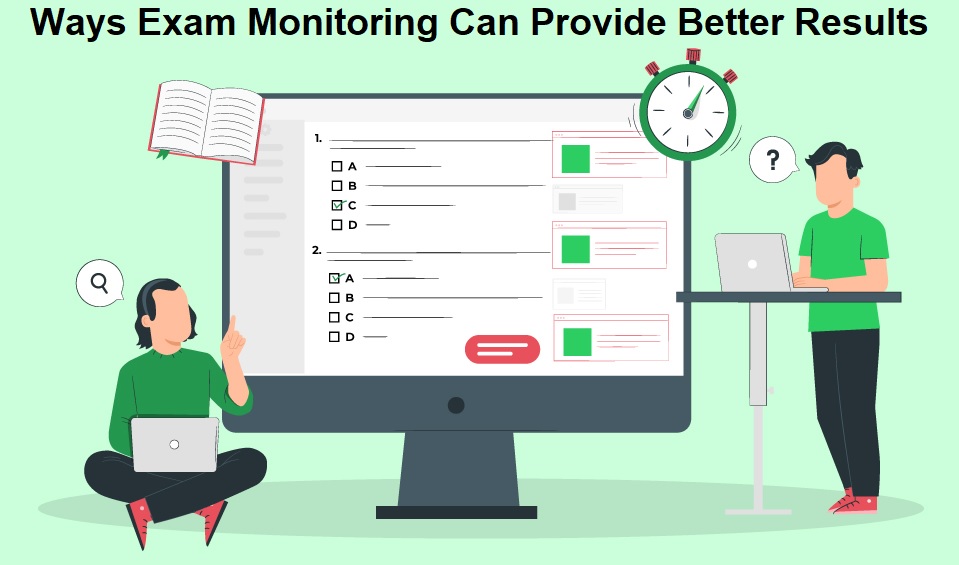In the past few years, online proctored tests have rapidly become a practical and inexpensive replacement for a conventional in-person assessment.
Exam monitoring software has become vital as more institutions transition to remote learning and employment. Assessing the understanding and abilities of students is beneficial for educators and institutions.
This article will discuss how exam monitoring can help you get ahead. The following advice will help you get ready for your upcoming exams and boost them as a result.
If you're a student preparing for a difficult test, this post will give you the necessary knowledge. This way, it'll be easy for you to make informed choices concerning exam-monitored tests. Let's go. Shall we?
What is Exam Monitoring?
Exam monitoring is as precise as its name implies—it is the proctoring of learners during an exam to stop them from cheating. In this case, it takes place online. Exam monitoring software like ProctorEdu Exams Monitor employs technological methods, including computer audio, screen recording, video recording, and more, to avoid cheating in every way practicable.
Exam monitoring software must offer GDPR-compliant methods of handling student data and be equally dedicated to delivering positive educational experiences as they are to avoid cheating.
How Does Exam Monitoring Function?
Much of the procedure here entails adapting how tests are monitored in a classroom setting. Every action, in this case, is intended to produce the ideal testing climate. Here is how it works:
1. Select Exam Monitoring Options
Regardless of the exam type you've created, not all of the functions that particular software offers may be applicable. For instance, there are better choices than web-tab locking if they need to make charts for the exam.
That's where strategy comes in. It would help if you thought about what to do to stop plagiarism and cheating without imposing needless restrictions.
2. Establish Test Regulations, Rules, and Adjustments
Always check that the space is appropriate for the type of work you'll be performing in it before studying for an exam. For instance, if your instructor specifies that you should put smartphones away throughout the exam, you should do the same.
The invigilator should refrain from playing a passive role in this. Establishing boundaries of what is appropriate or not is crucial to clarify what is required of everyone properly.
3. Authentication of Student ID
You can check the student's ID to ensure no one is taking the exam in their place. In this situation, list things they would require on the exam day for them to gear up in advance.
You might also aid the student in overcoming the problem if they need help finding their ID by providing them with backup proof of identity.
4. Students Finish the Online Exams Under Supervision
They can now proceed with the exam once they fully grasp the regulations. If there are any outages, the report will show them.
This would enable the teacher to assess the situation more accurately if a student asked for an extension of time because they had trouble connecting to the internet.
5. Examine the Proctored Test Results
You would be open to reports following the test, enabling you to comprehend better the testing environment your students are experiencing. You can also grade on a curve if many students fail to finish it in the allotted time.
You can better organize future exams using the information you gather. It also provides perspective on whether you ought to change the facilities.
Top 5 Ways Exam Monitoring Can Provide Better Results
1. Comfort
Exam monitoring allows you to take tests whenever you choose, from any location, as long as there is stable internet access. As a result, test takers won't need to go to a testing facility because it enables students to sit for the test at the convenience of their personal residences or places of employment.
2. Cost Reduction
Since there is no expense for a physical testing facility, exam monitoring reduces the expense of in-person exams.
3. Security
With options like camera monitoring, screen recording, and browser lockdown, exam monitoring technology delivers an elevated level of security. This guarantees that the exam's outcomes are precise and trustworthy.
4. Reduced Time Costs
Due to the software's capacity to autonomously score multiple-choice and short-answer questions, exam monitoring can be administered and evaluated quickly. This translates to substantially quicker results for test-takers than with conventional techniques.
5. Versatility
The exam monitoring process can be tailored to meet the requirements of specific students. The program, for instance, makes it possible to design exams with varying degrees of difficulty. Also, it provides capacities for people with disabilities.
Final Thoughts:
The conventional monitoring method is resource-intensive and provides students with a different degree of adaptability or convenience. Exam monitoring software has created ways to deliver excellent accessibility options to students and help schools supervise exams more successfully and reliably.








COMMENTS